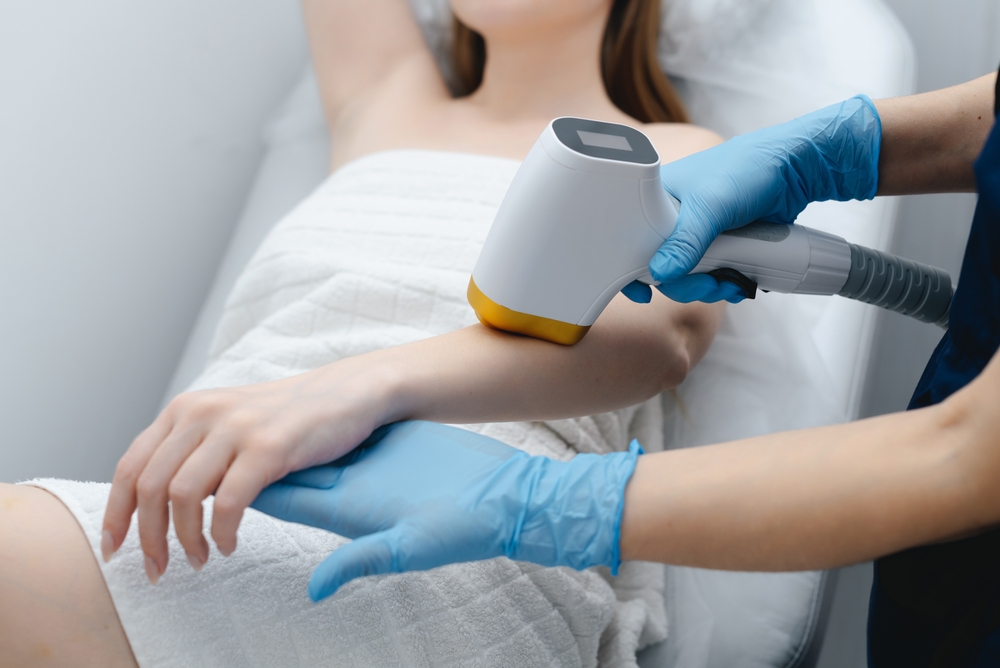Cryolipolysis: Reshaping Bodies Through Cold Technology
In the ever-evolving landscape of beauty and fitness, innovative treatments continue to emerge, promising transformative results with minimal invasiveness. Among these groundbreaking procedures, cryolipolysis stands out as a revolutionary approach to body contouring. This non-surgical fat reduction technique harnesses the power of cold temperatures to selectively target and eliminate stubborn fat cells, offering a compelling alternative to traditional liposuction. As the demand for non-invasive body sculpting solutions grows, cryolipolysis has captured the attention of both consumers and medical professionals alike, sparking a new era in the pursuit of aesthetic perfection.

Historical Development and FDA Approval
The concept of cryolipolysis emerged from an unexpected observation: children who consumed popsicles frequently developed dimples in their cheeks. This phenomenon, dubbed “popsicle panniculitis,” inspired researchers to explore the potential of cold-induced fat reduction. In 2008, scientists at Massachusetts General Hospital and Harvard University conducted the first human study on cryolipolysis, demonstrating its efficacy and safety. The treatment received FDA clearance in 2010 for fat reduction in the flanks and abdomen, with subsequent approvals for additional body areas in the following years.
Treatment Process and Patient Experience
During a cryolipolysis session, a specialized applicator is placed on the target area, creating suction to draw the tissue between two cooling panels. The device then delivers controlled cooling to the fat layer, typically maintaining a temperature between -11°C and -13°C for about an hour. Patients often report minimal discomfort during the procedure, describing sensations of intense cold, tingling, or mild pinching that subside as the area becomes numb. Many individuals find the treatment relaxing, using the time to read, work on laptops, or even nap.
Results and Recovery
One of the most attractive aspects of cryolipolysis is its minimal downtime. Unlike surgical procedures, patients can typically resume normal activities immediately after treatment. Some may experience temporary redness, swelling, bruising, or numbness in the treated area, but these side effects generally resolve within a few days to weeks. Results begin to appear gradually, with noticeable fat reduction typically seen within 2-4 months post-treatment. Studies have shown an average fat reduction of 20-25% in the treated area after a single session, with some patients experiencing even more significant results.
Comparing Cryolipolysis to Other Fat Reduction Methods
In the realm of non-invasive fat reduction, cryolipolysis stands out for its effectiveness and safety profile. Unlike laser-based treatments that use heat to destroy fat cells, cryolipolysis minimizes the risk of thermal damage to surrounding tissues. Compared to ultrasound-based methods, cryolipolysis often requires fewer treatment sessions to achieve desired results. However, it’s important to note that cryolipolysis is not a weight loss solution but rather a body contouring technique best suited for individuals close to their ideal weight with localized fat deposits.
Market Impact and Industry Trends
The introduction of cryolipolysis has significantly disrupted the aesthetic medicine market, offering a middle ground between invasive surgical procedures and less effective topical treatments. According to market research, the global non-invasive fat reduction market, of which cryolipolysis is a major component, is projected to reach $1.6 billion by 2025. This growth is driven by increasing consumer demand for minimally invasive procedures, technological advancements, and a growing emphasis on physical appearance in social and professional settings.
Technological Advancements and Future Directions
As cryolipolysis technology evolves, manufacturers are developing more sophisticated devices with improved efficacy and patient comfort. Recent innovations include applicators designed for specific body areas, such as the chin and upper arms, expanding the treatment’s versatility. Some systems now incorporate massage elements to enhance lymphatic drainage and fat cell elimination. Ongoing research is exploring the potential of combining cryolipolysis with other modalities, such as radiofrequency or shockwave therapy, to further enhance results and address skin laxity concerns.
Addressing Safety Concerns and Limitations
While cryolipolysis has demonstrated an excellent safety profile in clinical studies and real-world use, it’s not without potential risks. Rare complications include paradoxical adipose hyperplasia (PAH), a condition where the treated area experiences fat cell growth rather than reduction. The incidence of PAH is estimated at 0.0051%, but its exact cause remains unclear. Additionally, cryolipolysis is not suitable for individuals with certain medical conditions, such as cryoglobulinemia or cold urticaria. As with any aesthetic procedure, patient selection and thorough pre-treatment consultation are crucial for optimal outcomes and minimizing risks.
In conclusion, cryolipolysis represents a significant advancement in non-invasive body contouring, offering a safe and effective alternative to traditional fat reduction methods. As technology continues to evolve and long-term studies provide further insights, cryolipolysis is poised to play an increasingly prominent role in the beauty and fitness industry. However, it’s essential for consumers to approach this treatment with realistic expectations and under the guidance of qualified professionals. As the field of aesthetic medicine progresses, cryolipolysis stands as a testament to the innovative spirit driving the pursuit of enhanced physical appearance and self-confidence.





